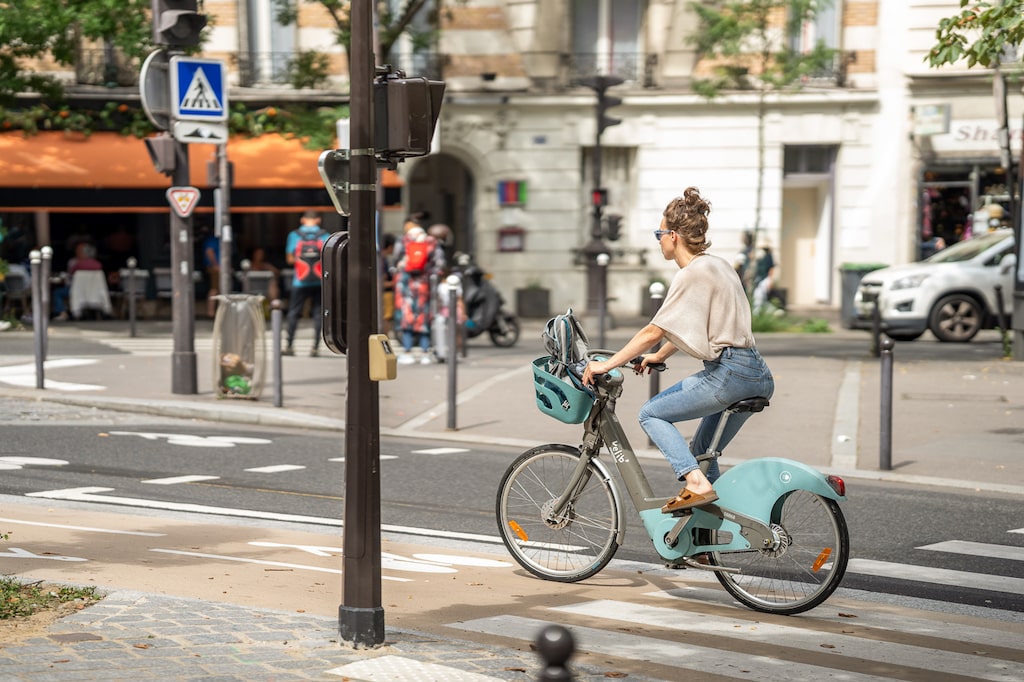Autumn Gear Guide
Find inspiration in our Gear Guide that will keep you out on your bike through wind or rain.
Download NowAs the City of Light prepares to host the Paris Olympics, the city is not just focusing on athletic achievements but also on creating a greener, more bike-friendly environment. And it will be on display for the world to see. This ambitious transformation includes the addition of 60 kilometers of new bike lanes, ensuring that […]
As the City of Light prepares to host the Paris Olympics, the city is not just focusing on athletic achievements but also on creating a greener, more bike-friendly environment. And it will be on display for the world to see.
This ambitious transformation includes the addition of 60 kilometers of new bike lanes, ensuring that all competition venues are easily accessible by bicycle. This initiative aims to provide a seamless and eco-friendly transportation option for both spectators and athletes, highlighting Paris’s commitment to sustainability.
“The first time you come to Paris, you come to see the landmarks, the Eiffel Tower etc. The second time, you want to experience the Parisian life and that’s what I want the people who come to the Olympics to experience,” Mayor Anne Hidalgo told Reuters. And that lifestyle, especially over the last 5-10 years, is more and more about bicycles.
A significant part of this plan involves nearly 30 kilometers of bike paths within Paris itself. These routes will be marked with distinctive signage and the vibrant colors and iconography of the Paris Olympics, turning the city’s streets into a lively celebration of the Olympic spirit. Key highlights include the Quai Jacques Chirac bike path and new routes serving the Parc des Princes and Porte de la Chapelle.
To support the expected influx of cyclists, 10,000 additional bike rack spaces will be installed around Olympic venues. These temporary installations will find permanent homes in sports centers, schools, and other public facilities post-Games, ensuring a lasting enhancement to the city’s cycling infrastructure. Moreover, the city has expanded its bike-sharing program, Velib, adding 3,000 new bikes, bringing the total to 15,000.

Bike share in Paris, France
The Seine-Saint-Denis department is also embracing this cycling revolution, with plans to develop 25 kilometers of new bike lanes as part of a comprehensive cycling network. This will improve connectivity to key Olympic venues like the Stade de France, where 3,000 permanent bike rack spaces are planned.
Paris aims to make cycling a cornerstone of its urban mobility long after the Games. The extensive infrastructure improvements are designed not only to facilitate movement during the event but also to encourage Parisians and visitors to adopt cycling as a daily habit. This initiative is supported by a dedicated ecological committee that ensures all developments align with the city’s long-term environmental goals.
“It’ll make great memories and provide additional cycling infrastructure for Parisians,” deputy mayor Adrien Sartre said, in a Bloomberg article.
Whether you’re dreaming of biking from the heart of Paris to the Parc des Princes or the new Arena at Porte de la Chapelle, the city’s enhanced cycling infrastructure promises a memorable and environmentally friendly experience during the Paris Olympics. This transformation sets a new standard, showing the world how a major city overrun with cars and trucks can successfully prioritize cycling and make space for people first in both daily life and major events.
Find inspiration in our Gear Guide that will keep you out on your bike through wind or rain.
Download Now
Leave a comment